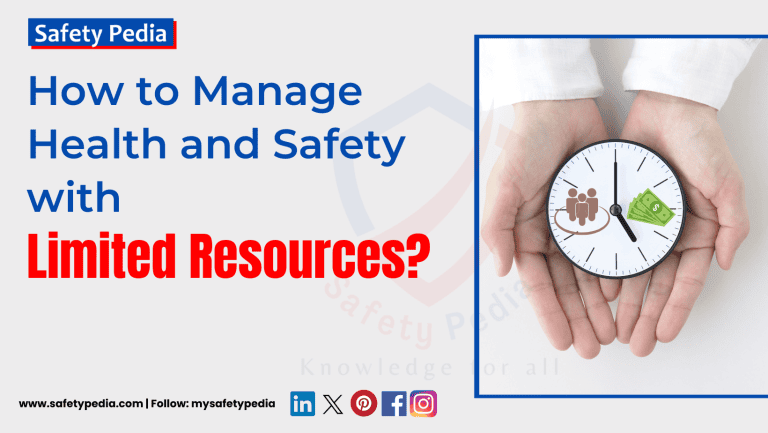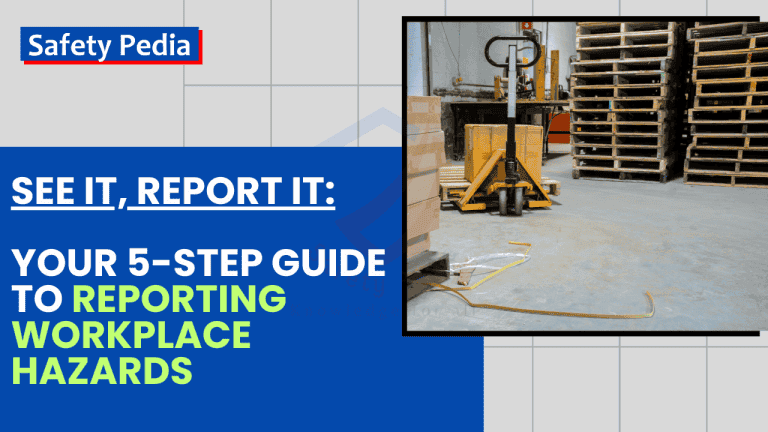
Introduction-How to get employees involved in safety matters:
Employee involvement in workplace safety is not just a regulatory requirement; it’s a fundamental aspect of creating a secure and productive work environment. Employee involvement in workplace safety is a crucial factor for creating a positive safety culture and preventing accidents and injuries. The question is, how to get employees involved in safety? A strong safety-oriented workplace can benefit both the employees and the organization in terms of productivity, morale, reputation, and compliance.
In this article, we will explore into the importance of employee involvement in workplace safety, encouraging employees to actively participate in safety measures, the benefits of promoting a safety-oriented workplace, and how ISO 45001, the international standard for occupational health and safety management systems, emphasizes the significance of employee involvement. We will also explore why engaged employees play a pivotal role in ensuring a safer workplace for all.
Involve and engage employee in safety, it is a low cost solution to manage health and safety
Importance of employee involvement in workplace safety
- The well-being of employees is a top priority for any responsible organization. The active participation of employees in safety initiatives is critical for preventing accidents, reducing risks, and ensuring a safe work environment.
- Employee involvement goes beyond compliance with regulations; it reflects a commitment to a culture of safety where employees have a vested interest in their own well-being and that of their colleagues.
- When employees are actively involved in safety, they become more vigilant, take ownership of their actions, and contribute to the continuous improvement of safety measures.
Benefits of a strong safety-oriented workplace
- A workplace that prioritizes safety not only protects its employees but also enjoys several additional benefits. These include reduced absenteeism, improved morale, increased productivity, and lower operational costs.
- A strong safety culture raises trust and loyalty among employees, which can lead to higher retention rates and better employee engagement.
- Demonstrating a commitment to safety can enhance an organization’s reputation, attracting top talent and encouraging client and stakeholder confidence.
Overview of ISO 45001 requirements for employee involvement
- ISO 45001 is an internationally recognized standard that provides a framework for implementing effective occupational health and safety management systems.
- This standard places significant emphasis on the active participation of employees at all levels of an organization. It requires that employees be engaged in hazard identification, risk assessments, incident reporting, and the development of safety procedures.
- By adhering to ISO 45001 requirements, organizations can ensure that safety is a shared responsibility, promoting a culture of accountability and continuous improvement.
Why engaged employees are vital for a safer workplace
- Engaged employees are those who are emotionally committed to their work, organization, and its goals. In the context of safety, engaged employees are more likely to follow safety protocols, report incidents, and actively contribute to a culture of safety.
- Engaged employees tend to be more observant, proactive, and responsible in their actions, which can help prevent accidents and injuries.
- Furthermore, engaged employees are often more receptive to training, open to suggestions for improvement, and willing to participate in safety-related activities, all of which are key elements in maintaining a safer workplace.
The key strategies to involve employees in safety initiatives
Employee involvement is crucial for the success of any safety program. Here are some key strategies to engage employees in safety initiatives:
Ownership and Accountability
One of the key aspects of creating a safe work environment is nurturing a culture of ownership and accountability among employees. This means that employees should feel responsible for their own safety and the safety of their co-workers, and that they should take proactive steps to prevent accidents and injuries. Ownership and accountability also imply that employees are empowered to make decisions, take initiative, and solve problems within their scope of work.
Promoting a sense of responsibility
Promote a sense of responsibility among employees by encouraging them to report unsafe conditions, suggest safety improvements, and follow safety rules and procedures.
Encourage employees to take ownership of their safety and the safety of their colleagues. Emphasize that safety is a collective responsibility.
Goal setting for safety improvement
Set clear and realistic goals for safety improvement, such as reducing accident rates, increasing compliance, or implementing best practices. Communicate these goals to employees and track their progress regularly. This provides a sense of purpose and motivation for safety initiatives.
Performance evaluations and safety
Incorporate safety performance into performance evaluations and reward systems. Recognize and reward employees who demonstrate positive safety behaviors, such as attending training sessions, wearing protective equipment, or reporting near misses. Provide constructive feedback and coaching to employees who need to improve their safety performance.
Involving Employees in Safety Committees
One of the best ways to improve workplace safety is to involve employees in safety initiatives. Employees are the ones who face the risks and hazards every day, so they have valuable insights and suggestions on how to prevent accidents and injuries. Involving employees in safety committees is a proven strategy to promote a culture of safety and increase employee engagement.
Involving employees in safety committees is not only beneficial for workplace safety, but also for employee morale, productivity, and retention. By following these tips, you can create a successful safety committee that engages employees and improves safety performance.
Here are some tips on how to involve employees in safety committees effectively.
Establishing safety committees
Form committees with representation from various departments or teams to focus on safety-related issues. A safety committee is a group of employees who meet regularly to discuss and address safety issues in the workplace. The committee should have representatives from different departments, levels, and shifts, as well as management support. The committee should have a clear purpose, scope, and goals, as well as defined roles and responsibilities for its members. The committee should also have a budget, a schedule, and a communication plan.
Encouraging employee participation

Actively involve employees in safety committee meetings, ensuring that their voices and concerns are heard. One of the challenges of involving employees in safety committees is to motivate them to participate actively and constructively. Some of the ways to encourage employee participation are:
- Providing training and education on safety topics and committee functions
- Recognizing and rewarding employee contributions and achievements
- Soliciting feedback and suggestions from employees on safety issues and solutions
- Creating a positive and supportive atmosphere for open and honest communication
- Empowering employees to take action and implement changes
Collaborative problem-solving and decision-making
Use safety committees as forums for collaborative problem-solving and decision-making related to safety issues. Employees should have a say in safety decisions that affect them. Another challenge of involving employees in safety committees is to ensure that the committee works as a team and makes effective decisions. Some of the ways to encourage collaborative problem-solving and decision-making are:
- Defining the problem clearly and gathering relevant data and information
- Brainstorming possible solutions and evaluating their pros and cons
- Seeking consensus and compromise among committee members
- Communicating the decisions and rationale to the rest of the organization
- Monitoring and evaluating the outcomes and impacts of the decisions
Safety Reporting Systems
One of the most effective ways to engage employees in safety initiatives is to establish a robust safety reporting system. A safety reporting system is a mechanism that allows employees to report any hazards, unsafe conditions, near misses, or incidents that they encounter or witness in their work.
By implementing a safety reporting system, you can create a feedback loop that encourage employee engagement and involvement in safety initiatives. You can also collect valuable data and insights that can help you identify and address safety risks and opportunities in your organization.
A safety reporting system should have the following features:
Encouraging employees to report hazards and unsafe conditions without fear of reprisal
Create a culture where employees feel safe reporting safety concerns without the fear of retaliation. It should encourage employees to report any safety issues without fear of reprisal, retaliation, or blame. Employees should feel comfortable and confident to speak up about safety concerns and know that their reports will be taken seriously and acted upon.
Encouraging employees to participate in Investigation
Involve employees in incident investigations to gather firsthand information and insights. It should encourage employees to participate in the investigation of safety issues and incidents. Employees should be involved in identifying the root causes, contributing factors, and corrective actions for any safety problems that they report or experience. This way, they can learn from the incidents and prevent them from recurring.
Employee involvement in incident root cause analysis
Collaborate with employees to identify root causes of incidents and develop corrective actions. It should provide employees with feedback and action plans based on their reports. Employees should be informed about the status and outcome of their reports and the actions taken to address them. They should also be recognized and rewarded for their contributions to safety improvement.
Anonymous reporting options
Provide a mechanism for anonymous reporting to protect employees who may be uncomfortable revealing their identity. It should offer anonymous reporting options for employees who prefer not to disclose their identity. While it is preferable to have open and transparent communication about safety issues, some employees may have valid reasons to remain anonymous. For example, they may fear retaliation from their peers or supervisors, or they may not want to damage their reputation or career prospects. In such cases, anonymous reporting options can help employees overcome their reluctance and report safety issues without fear.
Feedback and action plans based on reported incidents
Ensure that reported incidents lead to concrete actions and improvements, and communicate these to employees. It should be easy and convenient to use. Employees should be able to access and use the safety reporting system through various channels, such as online forms, mobile apps, phone calls, or email. The system should also be user-friendly and intuitive, with clear instructions and guidance on how to report safety issues.
Employee Involvement in Safety Policies and Procedures
One of the best ways to improve workplace safety is to involve employees in the process. Employees are the ones who face the risks and hazards every day, so they have valuable insights and suggestions on how to prevent accidents and injuries.
By involving employees in safety initiatives, organizations can benefit from improved safety culture, performance, and outcomes. Employees can also benefit from increased engagement, empowerment, and satisfaction. Therefore, it is important to adopt these key strategies to involve employees in safety initiatives.
Here are some key strategies to involve employees in safety initiatives.
Seeking employee input on safety guidelines
Solicit employee feedback when developing or revising safety policies and procedures. A good way to start involving employees in safety is to ask for their feedback on the existing policies and procedures. Employees can help identify gaps, inconsistencies, or outdated practices that need to be revised or updated. They can also share their experiences and challenges with implementing the policies and procedures, and propose solutions or improvements.
Some ways to seek employee input on safety guidelines are:
- Conducting surveys, interviews, or focus groups
- Creating suggestion boxes or online platforms
- Forming safety committees or teams
- Holding regular meetings or forums
Provide opportunities for employees to contribute to safety procedures and policies
Allow employees to offer suggestions and improvements. Another way to involve employees in safety is to give them opportunities to actively participate in the creation or modification of safety procedures and policies. Employees can help design, test, or evaluate new or existing safety measures, and provide feedback on their effectiveness or feasibility. They can also help communicate or train other employees on the safety procedures and policies.
Some ways to provide opportunities for employees to contribute to safety procedures and policies are:
- Inviting employees to join safety projects or initiatives
- Assigning employees to lead or facilitate safety activities or tasks
- Encouraging employees to volunteer or nominate themselves for safety roles or responsibilities
- Recognizing or rewarding employees for their safety contributions or achievements
Involving employees in the development and review of safety protocols
Include employees in the review and approval process of safety protocols to ensure practicality and relevance. Involving employees in the development and review of safety protocols. Another way to involve employees in safety is to include them in the development and review of safety protocols. Employees can help set the goals, objectives, and standards for safety performance, and monitor and measure the progress and results. They can also help identify the root causes of safety issues or incidents, and recommend corrective or preventive actions.
Some ways to involve employees in the development and review of safety protocols are:
- Engaging employees in safety planning or strategy sessions
- Involving employees in safety audits or inspections
- Soliciting employee feedback on safety reports or data
- Empowering employees to report or resolve safety problems or concerns
Ensuring policies are practical and feasible
Make sure that safety policies are realistic and achievable in the workplace. A fourth way to involve employees in safety is to ensure that the policies are practical and feasible for them. Employees can help assess the suitability, applicability, and compatibility of the policies with their work environment, equipment, and tasks. They can also help identify any barriers, challenges, or risks that may hinder their compliance or performance.
Some ways to ensure policies are practical and feasible are:
- Consulting with employees before implementing or changing policies
- Providing adequate resources, tools, and support for employees to follow policies
- Adapting policies to different situations, contexts, or needs
- Reviewing policies regularly and making adjustments as needed
Safety Suggestion Programs
One of the most effective ways to engage employees in safety initiatives is to implement a safety suggestion program. This is a system that allows employees to share their ideas and feedback on how to improve safety in their work areas or processes.
By following these steps, you can create a safety suggestion program that engages your employees in safety initiatives and enhances your organizational safety culture. Remember that safety is not only a responsibility but also an opportunity for improvement and innovation.
A safety suggestion program can have multiple benefits, such as:
Encouraging employees to provide safety suggestions
Actively promote and reward employees for their safety-related suggestions. You can do this by communicating the purpose and benefits of the program, providing clear and simple guidelines on how to submit suggestions, creating multiple channels for feedback (such as online forms, suggestion boxes, or meetings), and making the process transparent and accessible.
Evaluating and implementing valuable suggestions
Evaluate, review and implement suggestions that improve safety. You need to have a dedicated team or committee that reviews the suggestions and decides which ones to implement. You should also have clear criteria and standards for evaluating the suggestions, such as feasibility, cost-effectiveness, impact, and alignment with organizational goals. You should provide timely feedback to the employees who submitted the suggestions, whether they are accepted or rejected, and explain the reasons behind the decision.
Recognizing employees for their contributions
Publicly recognize and reward employees for their safety-related ideas and contributions. You need to acknowledge and reward the employees who provide valuable suggestions that improve safety in your organization.
You can do this by providing public recognition:
- Monetary incentives (such as certificates, plaques, or newsletters), (such as bonuses, gift cards, or prizes),
- Non-monetary incentives (such as extra time off, flexible schedules, or training opportunities).
You should also celebrate the successful implementation of the suggestions and share the results and outcomes with the rest of the organization.
Empowering Employees to Stop Unsafe Practices
One of the most effective strategies is to empower your employees to stop unsafe practices. This means giving them the authority and the responsibility to intervene when they see something that could compromise safety, whether it is a faulty equipment, a hazardous situation, or a risky behavior.
By following these steps, you can empower your employees to stop unsafe practices and improve safety performance in your organization. Remember that employee empowerment is not a one-time event, but an ongoing process that requires constant communication, feedback, support, and recognition. By empowering your employees to stop unsafe practices, you can not only create a safer work environment, but also a more productive, engaged, and satisfied workforce.
But how can you empower your employees to stop unsafe practices? Here are some steps you can take:
Creating a culture of empowerment
Empower employees to stop unsafe practices or report safety violations without fear of reprisal. An important step is to establish a culture that values and supports employee empowerment. This means making it clear that safety is everyone’s responsibility, not just the management’s or the safety department’s. It also means communicating your expectations and goals for safety, and providing feedback and recognition for employee involvement. Moreover, it means creating an open and trusting environment where employees feel comfortable to speak up and share their ideas and concerns without fear of retaliation or criticism.
Training employees to identify and report unsafe behaviors
Provide training to help employees recognize and address unsafe behaviors. Another step is to equip your employees with the knowledge and skills they need to identify and report unsafe behaviors. This means providing them with regular and relevant safety training that covers the potential hazards, risks, and best practices in their work area. It also means teaching them how to use the tools and resources available to them, such as safety checklists, incident reporting forms, or emergency procedures. Furthermore, it means encouraging them to use their observation and critical thinking skills to spot and address unsafe behaviors, such as ignoring safety rules, taking shortcuts, or working under stress or fatigue.
Ensuring a non-punitive approach to reporting safety concerns
Emphasize that reporting safety concerns is an act of responsibility, not a cause for punishment. Ensure a non-punitive approach to reporting safety concerns. Another step is to ensure a non-punitive approach to reporting safety concerns. This means creating a system that makes it easy and convenient for employees to report safety issues, whether it is through an online platform, a hotline, or a suggestion box. It also means ensuring that every report is taken seriously and followed up promptly, and that the root causes of the problems are identified and corrected. Moreover, it means avoiding blaming or punishing employees who report safety concerns, and instead thanking them for their contribution and involving them in the solution.
Promoting Open Communication and Consultation
One of the most important ways to engage employees in safety initiatives is to promote open communication and consultation. This means creating a culture of open communication where employees feel comfortable discussing safety concerns, sharing their opinions and suggestions, and reporting any hazards or incidents. Open communication also means encouraging regular safety discussions and feedback sessions, where employees can learn from each other, exchange best practices, and identify areas for improvement. By promoting open communication and consultation, you can promote a sense of trust and collaboration among your employees, as well as increase their awareness and knowledge of safety issues.
By actively implementing these strategies, organizations can create a culture of open communication, where employees are not only comfortable discussing safety concerns but are also actively engaged in shaping and improving safety initiatives.
Create a culture of open communication where employees feel comfortable discussing safety concerns
Encourage open dialogue about safety matters. Establish an environment where employees feel safe expressing their safety concerns without fear of retribution. Encourage an open-door policy, signaling that management is receptive to hearing about safety issues.
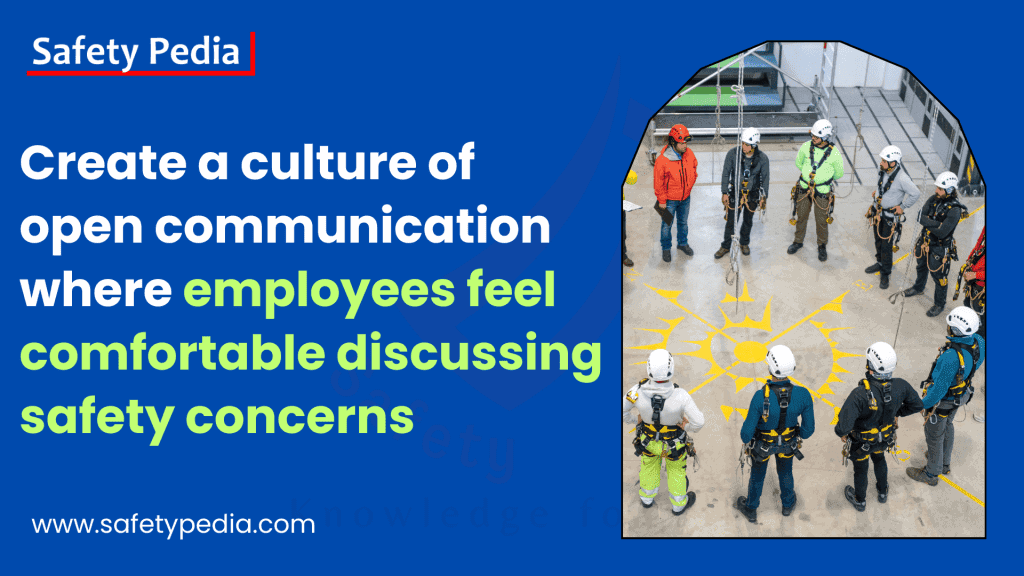
Encourage regular safety discussions and feedback sessions
Schedule regular meetings dedicated to discussing safety matters, providing a platform for employees to share their thoughts and gather feedback. Use these sessions to review safety procedures, address any questions or concerns, and reinforce the importance of safety.
Encouraging employees to voice concerns and share insights
Actively seek input from employees on safety issues and improvements. Reinforce the idea that every employee’s perspective on safety is valuable. Provide multiple channels, such as suggestion boxes or digital platforms, for employees to easily voice their safety concerns and share insights.
Addressing safety issues promptly and transparently
Ensure that safety concerns are addressed promptly, and communicate the resolution process transparently. Demonstrate a commitment to swift action by addressing reported safety issues promptly. Communicate transparently with employees about the steps being taken to resolve safety concerns, encouraging trust in the safety process.
Employee involvement in decision-making processes
Include employees in decision-making related to safety protocols, procedures, and equipment. Seek input from employees when making decisions that impact their safety, creating a sense of ownership and empowerment.
Regular feedback and suggestion
Establish a continuous feedback loop where employees are regularly asked for input on safety initiatives. Acknowledge and act upon the feedback received, demonstrating that employee input is valued and contributes to ongoing safety improvements.
Employee Training and Competence
One of the key strategies to engage employees in safety initiatives is to provide them with adequate training and competence development.
By following these steps, the organization can ensure that its employees are well-trained and competent in safety matters, and that they are actively involved in safety initiatives. This will not only improve the safety performance and culture of the organization, but also enhance the motivation, satisfaction, and loyalty of employees.
This involves four steps:
Identifying training needs
The first step is to assess the current level of knowledge and skills of employees regarding safety issues, as well as the gaps and areas for improvement. This can be done through surveys, interviews, observations, audits, or tests. Based on the results, the organization can determine the specific training needs for each employee or group of employees. Assess the safety training needs of employees and provide relevant training programs.
Providing training programs for employees
The second step is to design and deliver training programs that address the identified training needs and align with the organization’s safety goals and standards. The training programs should be relevant, engaging, interactive, and practical. They should also use various methods and formats, such as lectures, videos, simulations, games, or case studies. Offer comprehensive safety training to ensure employees have the necessary knowledge and skills.
Ensuring competence and skill development for safety
The third step is to evaluate the effectiveness of the training programs and measure the learning outcomes of employees. This can be done through feedback, quizzes, assessments, or performance reviews. The organization should also provide opportunities for employees to apply their learning in real work situations and practice their skills. Regularly evaluate and improve employee competence in safety matters.
Involving employees in safety certifications
The fourth step is to encourage and support employees to obtain safety certifications or accreditations that demonstrate their competence and commitment to safety. This can be done by providing information, guidance, resources, or incentives for employees who want to pursue such certifications. The organization should also recognize and reward employees who achieve them. Encourage employees to pursue safety certifications to enhance their knowledge and skills.
Participation in Hazard Identification and Risk Assessment
One of the most effective ways to engage employees in safety initiatives is to involve them in the process of hazard identification and risk assessment. This means that employees are not only informed of the potential hazards and risks in their workplace, but also participate in identifying, analyzing, and evaluating them.
Participation in hazard identification and risk assessment can benefit both employers and employees. For employers, it can help them comply with legal obligations, reduce costs associated with accidents and injuries, improve productivity and quality, and enhance their reputation and image. For employees, it can help them protect their health and well-being, increase their awareness and knowledge of safety issues, improve their morale and motivation, and promote a positive safety culture.
By doing so, employees can:
- Gain a better understanding of the nature and severity of the hazards and risks they face
- Contribute their knowledge, experience, and perspectives to the risk assessment process
- Feel more empowered and responsible for their own safety and that of their co-workers
- Develop a sense of ownership and accountability for the safety initiatives and solutions
By involving employees in hazard identification and risk assessment, you can achieve several benefits for your organization, such as:
- Improving safety performance and reducing injuries, illnesses, and costs.
- Enhancing employee engagement and satisfaction by giving them a voice and a sense of ownership in safety matters.
- Promoting a positive safety culture and climate by promoting trust, communication, collaboration, and accountability among employees and managers.
- Increasing compliance with legal and regulatory requirements by ensuring that hazards and risks are identified and addressed promptly and effectively.
- Boosting productivity and quality by creating a safer and healthier work environment that supports employee well-being and performance.
Some of the ways to involve employees in hazard identification and risk assessment are:
Involving employees in identifying workplace hazards
Engage employees in hazard identification, as they are often most familiar with the specific risks in their work areas. Employers can encourage employees to report any hazards they observe or encounter in their work activities, using various methods such as suggestion boxes, online forms, or safety committees. Employers can also conduct regular inspections and audits with employee participation, using checklists or tools such as hazard maps or risk matrices. Employers should acknowledge and respond to employee reports and suggestions promptly and effectively.
Collaborating on risk assessment
Work together with employees to assess and prioritize risks. Employers can invite employees to join risk assessment teams or workshops, where they can share their opinions and experiences on the hazards they face, the potential consequences, and the existing control measures. Employers can also consult employees on the criteria and methods for risk evaluation, such as frequency, severity, exposure, or probability. Employers should ensure that employees understand the risk assessment process and results, and provide them with feedback and recognition.
Collecting and utilizing employee input for safety improvements
Use employee input to inform safety improvements and preventive measures. This may include eliminating or minimizing the hazard, implementing new or improved controls or measures, providing training or education, or monitoring and reviewing the effectiveness of the actions taken. Employees should be involved in this process as well, as they can contribute ideas, suggestions, or feedback on how to improve safety in their workplace.
Recognize and Reward Safe Behavior
One of the key strategies to engage employees in safety initiatives is to recognize and reward safe behavior. This means acknowledging and appreciating employees who follow safety rules, report hazards, suggest improvements, or participate in safety training or committees. Recognition and rewards can take various forms, such as verbal praise, certificates, badges, bonuses, gifts, or public announcements.
Recognizing and rewarding safe behavior has several benefits for both employees and the organization. For employees, it can increase their motivation, satisfaction, self-esteem, and loyalty. For the organization, it can improve safety performance, reduce accidents and injuries, lower costs, enhance reputation, and promote a positive work environment.
By recognizing and rewarding safe behavior, you can engage your employees in safety initiatives and make them feel more responsible and involved in their own and others’ safety. This can lead to a safer and more productive workplace for everyone.
However, recognition and rewards need to be implemented carefully and effectively to achieve the desired outcomes. Here are some tips on how to do so:
Implement a system to recognize and reward employees for safe behavior
Develop a structured rewards system to incentivize safe practices. This can be a formal or informal system, depending on the size and nature of the organization. A formal system may involve setting specific criteria and indicators for safe behavior, collecting data and feedback, evaluating performance, and distributing rewards. An informal system may rely more on observation and communication, such as giving spontaneous compliments or thank-you notes.
Celebrate safety achievements and milestones
Recognize and celebrate safety milestones to motivate and reinforce the importance of safety. This can be done at individual, team, or organizational levels. For example, you can celebrate when an employee completes a safety course, when a team reaches a certain number of days without accidents, or when the organization achieves a safety certification or recognition. Celebrations can be simple or elaborate, such as sending an email, hosting a party, or organizing a ceremony.
Promote a culture of positive reinforcement for safety practices
Encourage a positive atmosphere where safe behaviors are acknowledged and praised. This means creating an atmosphere where employees feel valued and supported for their safety efforts, rather than criticized or punished for their mistakes. Positive reinforcement can encourage employees to continue and improve their safe behavior, as well as to influence their peers to do the same. To promote a positive reinforcement culture, you can use positive language, express gratitude, provide constructive feedback, and avoid blame or threats.
Remove barriers to employee participation and involvement in safety related matters
Removing barriers to employee participation and involvement in safety-related matters is crucial for promoting a strong safety culture. Here are some strategies to eliminate barriers and encourage active employee engagement in safety:
Remove Fear of Retaliation:
- Communicate a non-punitive approach to reporting safety concerns.
- Ensure that employees feel secure in reporting hazards and unsafe conditions without fear of reprisal.
Provide Anonymous Reporting Options:
- Establish anonymous reporting mechanisms to allow employees to report safety concerns without revealing their identity.
- Ensure that employees feel comfortable using these channels to voice their concerns.
Address Language and Cultural Barriers:
- Recognize and address language and cultural barriers that may hinder effective communication.
- Provide translated safety materials and training to accommodate diverse linguistic backgrounds.
Promote Inclusivity and Diversity:
- Ensure that safety initiatives are inclusive and consider the diverse needs of all employees.
- Encourage the participation of employees from different backgrounds and experiences in safety-related activities.
Facilitate Access to Resources:
- Provide easy access to safety resources, such as training materials, safety guidelines, and reporting tools.
- Ensure that employees have the necessary tools and equipment to actively participate in safety initiatives.
Provide opportunities for employees to share their ideas, suggestions and best practices on how to improve safety in the workplace.
How to Measure Employee Engagement in Safety Initiatives?
Employee engagement in safety initiatives is crucial for creating a safe and productive work environment. However, how can you measure the level of engagement and the impact of your safety initiatives? Here are some methods and metrics that you can use to assess employee engagement in safety initiatives.
Safety Surveys and Questionnaires
One of the simplest and most common methods of measuring employee engagement in safety is conducting surveys and questionnaires. Surveys and questionnaires can help you collect feedback and opinions from your employees on various aspects of safety, such as their awareness, attitude, behavior, satisfaction, motivation, and perception. You can use various types of questions, such as open-ended, closed-ended, Likert-scale, or multiple-choice, to gauge your employees’ responses. Use a combination of quantitative and qualitative questions to gather comprehensive feedback. You can also use different formats of delivery, such as paper-based, online, or mobile. Some examples of survey questions are:
- How often do you participate in safety discussions or feedback sessions?
- How comfortable do you feel reporting hazards or incidents?
- How satisfied are you with the safety training and resources provided by the organization?
- How motivated are you to follow safety rules and procedures?
- How do you rate the safety culture and leadership of the organization?
Safety Performance Indicators
Another method of measuring employee engagement in safety is using safety performance indicators. Safety performance indicators are quantitative measures that reflect the outcomes or results of your safety initiatives. They can help you monitor and evaluate the effectiveness and efficiency of your safety initiatives and identify areas for improvement. Some examples of safety performance indicators are:
- Number or rate of accidents, injuries, illnesses, or fatalities
- Number or rate of near misses or incidents
- Number or rate of hazards or risks identified or reported
- Number or rate of corrective or preventive actions taken or completed
- Number or rate of safety audits or inspections conducted or passed
- Number or rate of safety goals or milestones achieved
Safety Observations and Interviews
A third method of measuring employee engagement in safety is conducting observations and interviews. Observations and interviews can help you collect qualitative data and insights from your employees on their actual safety behaviors and practices. They can also help you understand the underlying factors that influence their engagement in safety, such as their beliefs, values, emotions, motivations, challenges, or barriers. You can use various techniques of observation and interview, such as direct observation, participant observation, structured interview, semi-structured interview, or unstructured interview. Some examples of observation and interview questions are:
- What are the main hazards or risks that you encounter in your work activities?
- How do you prevent or mitigate them?
- What are the main challenges or barriers that prevent you from engaging in safety initiatives?
- How do you overcome them?
- What are the main benefits or rewards that motivate you to engage in safety initiatives?
- How do you experience them?
Conclusion:
In this article, we have discussed some effective strategies for engaging employees in safety. These include involving them in safety planning and decision making, providing them with regular feedback and recognition, creating a learning culture that supports continuous improvement, and empowering them to report and address hazards. We have also highlighted the benefits of a strong safety culture for the organization, such as improved productivity, quality, reputation, and employee satisfaction.
By implementing these strategies, you can promote a safer work environment for your employees and achieve your organizational goals. We hope you have found this article useful and informative, and we encourage you to apply these strategies in your workplace.
References:
https://www.osha.gov/safety-management/worker-participation
https://www.hsph.harvard.edu/ecpe/employee-engagement-improves-environmental-health-and-safety/
Your one click can make a difference
Keep sharing and promoting health and safety awareness!
Related posts:
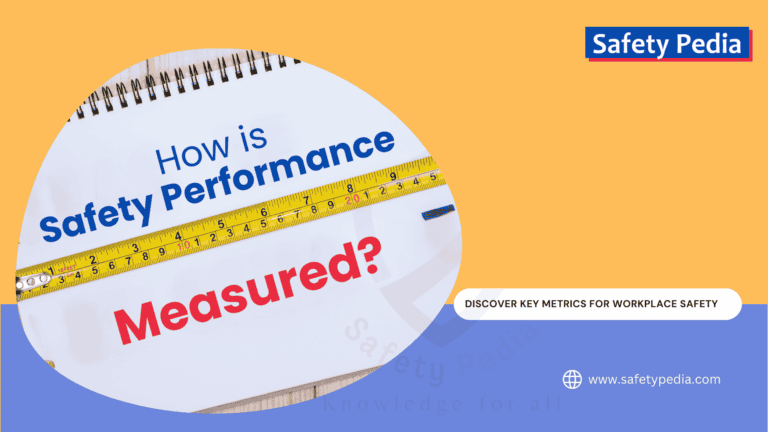
How to Measure Safety Performance?
Struggling to measure your workplace safety performance? Learn how to measure safety performance with key metrics to improve workplace safety. Discover essential indicators for risk assessment, compliance, and accident prevention.
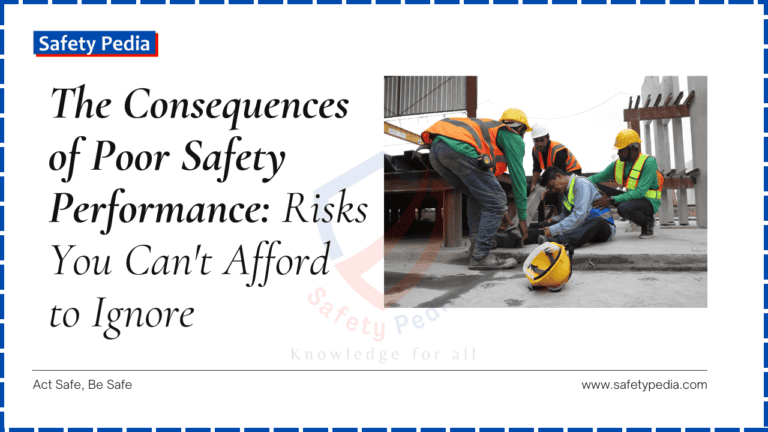
The Consequences of Poor Safety Performance: Risks You Can’t Afford to Ignore
Discover the potential consequences of poor safety performance in the workplace and how they can negatively impact both employees and the company as a whole.
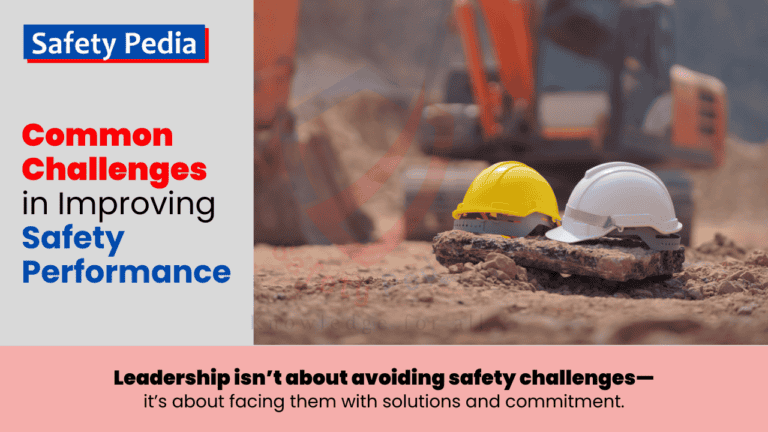
18 Common Challenges in Improving Safety Performance at Work
Discover 18 common challenges in improving safety performance at work. Learn how to overcome these obstacles for a safer workplace.
Join Our Safety Community!
Stay informed with the latest tips and insights on occupational health, safety, and the environment.


